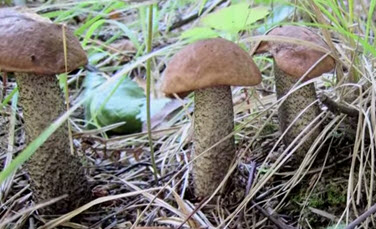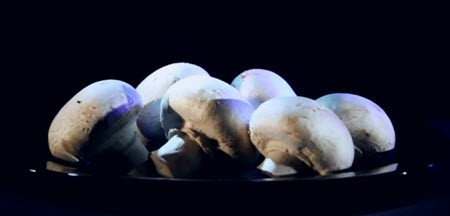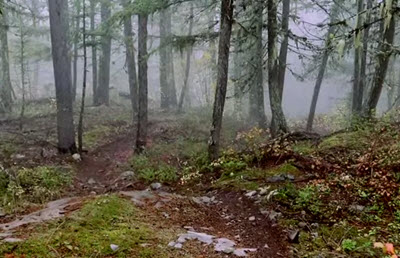Mushrooms are one of the most mysterious wildlife phenomena on our planet. Traditionally, botanists study them, but scientists still hesitate where to attribute them - to plants or animals?
They are devoid of chlorophyll and therefore need ready-made organic matter to maintain their life. The presence of glycogen starch in the metabolism of urea and animal starch, and chitin in the cell membrane (the outer cover of crayfish and insects consists of this organic matter) – all this brings them closer to animals. And they grow and feed like plants.
The behavior of fungi does not fit into the classical ideas of biologists about the processes occurring in the body of plants and animals. It is no coincidence that in the XVI century they were called a "miracle of nature". The more they are studied, the more questions there are not answers, but questions.
There is no consensus even about how many mushrooms there are on the globe. Some authoritative publications cite the figure of 100 thousand species, others - 200, and some hint that there are much more mushrooms. Like, wait, these unpredictable creatures will still argue for a place in the sun with the very owner of the planet - a human!
Today, there is little doubt that there are three distinct kingdoms—animals, plants, and fungi. The former number up to a million species. The second - half a million. It would seem, where can some mushrooms compete with such strength - they are not even visible from the ground. However, let's not rush to conclusions. All living things have more or less decided on their "place of residence" – some on land, some on the sea, some in the river, some underground. Some are in the north, others in the south. In short, who settled down and got used to it.
And what about mushrooms? They are where there are conditions for the existence of organisms that feed on ready-made organic compounds. That is, everywhere. In the polar ice and in the tropics, in forests and deserts, on mountain peaks and in the depths of caves, in seas and rivers, mushrooms are everywhere. In huge lands, they inhabit the soil and forest litter, live on animals and plants, on food residues, various materials, industrial products, and, finally, on other fungi.
That's who managed to adapt to the conditions of life in any corner of the planet and, most importantly, get along with their "neighbors". Let's start with us. Without mushrooms, we would have no bread, no wine, no many types of dairy products, no antibiotics, not to mention citric acid, enzymes, vitamins. Of course, there are costs, but we are still talking about benefits, and not a small one.
Decomposing organic residues, fungi together with bacteria participate in soil formation, in the creation of a fertile soil layer – humus.
"Settling" in the forest, mushrooms help trees to live, and not only by decomposing fallen leaves. With the root system of certain weight species, they form the so-called mycorrhizae (translated from Greek as "mushroom root"). They not only receive the carbohydrates they need from the root system of trees, but also supply trees with moisture, nitrogenous and some other nutrients. It turns out that the fungus and the tree can no longer live without each other. When creating forest plantations in steppe areas, foresters are forced to plant mycelium to young trees - otherwise all the work will go to waste.
We know from school textbooks that lichen is a symbiosis (i.e. mutually beneficial cohabitation of organisms) of a fungus and an algae. Over there; Where nothing living can survive — on rocks and bare rocks — this couple settles comfortably: the algae, capable of photosynthesis, provides itself and the fungus with organic substances, and the fungus protects the algae cells from adverse external influences and supplies them with water and mineral compounds.
There is no ecological niche in the biosphere where fungi would not be present – and always "in company". Unicellular (for example, yeast) and the most complex multicellular organisms, invisible to the naked eye and delighting our eyes in the forest thickets, are all fungi. True, most often we notice not them, but the results of their activities - rust or smut on plants, multi-colored mold on food, vegetables, fruits, on paper, fabrics, plastics, etc.
Mushrooms are not only ubiquitous, but also extremely tenacious. Sometimes the "lodger" outlives the "owner" for a long time, as, for example, a tinder. It can live on a tree for several years, and if the tree dies, the fungi continue to develop on the dead one.
Great advantages are given to mushrooms by their structure. When we pick milk mushrooms or butter cans in the forest, we do not always know what is in our
hands not the whole mushroom, but only its fruiting body. The main part of the mushroom is hidden from our eyes. It is found in the soil, in the
tree trunks or stumps and consists of many threads — hyphae that penetrate the base that nourishes the fungus. Parallel joints of hyphae form mycelial cords, through which water and nutrients flow. In some mushrooms, the cords reach several meters long and several millimeters thick.
Mycelium can spread over long distances and capture vast areas of the medium that feeds it. In addition, it creates almost unlimited opportunities for the formation of various forms of the fruiting body of fungi, which makes it easier for fungi to exist in the most seemingly unsuitable terrestrial conditions. In a real house fungus, in addition to mycelial threads, cotton-wool clusters of mycelium are also formed. They spread with incredible speed through the wooden structures of buildings and can freely overcome any obstacles - even stone walls.
Microscopic parasitic fungi that feed on living tissues, plants or other organisms often have special twigs of mycelium that penetrate the cells of the "host" and absorb nutrients from it. Predatory fungi are especially curious in this regard (there are such!). They catch, kill, and eat microscopically small animals: rotifers, nematodes, small insects, and so on.
Often, predatory fungi catch animals that are much larger than themselves. They manage to grab such a large, mobile and strong victim as a nematode with the help of special adhesive nets consisting of many rings. Nematodes are either "glued" or grasped by shrinking rings. At the same time, predatory fungi can live in the soil as ordinary saprophytes, i.e., feed on dead organic matter. They are trying to use them to disinfect soils, to combat plant pests.
Content
How do fungi reproduce?
Fungi reproduce mainly by spores. Vegetative reproduction is also possible, when a part of the mycelium is separated from the main mass, which can develop independently.
Fungi produce spores in huge quantities. For example, the fruiting body of tinder forms up to 25-30 billion spores, and the mushroom - about 40 billion spores per hour. The causative agent of stem rust - cereals forms up to 60×1012 spores on one barberry bush in spring and early summer (try to imagine this number1)
Fungal spores can be found everywhere - in the soil, in water, in the air. The spores of the causative agent of stem rust of cereals, already familiar to us, can rise by air currents to a height of more than two kilometers and be transported to a distance of up to several thousand kilometers. We say: a worm mushroom. This means that the larvae of fungal flies or mosquitoes have appeared in its pulp. Larvae and adult insects, feeding on the pulp of mushrooms or laying eggs, thus transfer the spores of their "feeders".
A person also participates in this. In the middle of the last century, phytophthora was brought from America to Europe - the causative agent of potato disease, which caused a terrible famine in those European countries where potatoes were the main food for the majority of the population.
The ability of fungi to change, adapting to ever-changing environmental conditions, is simply amazing. For example, the causative agent of histoplasmosis, which develops in the body of humans and animals, exists there in the form of yeast, and when it gets into the soil, it forms normal mycelium there. Scientists, looking at strange hairs or bristles on the surface of insect covers, for a long time could not understand what they were observing - an unfamiliar pathology or a plant parasite still unknown to science. It turned out that this is the vegetative body of a peculiar group of fungi - labulbeniaceae. These insect parasites can even be found on cockroaches.
In our everyday life, we treat mushrooms purely practically. We fight against those that harm our health, home, fields, gardens and vegetable gardens. We try not to harm those that we use for food, and even breed them artificially. We extract medicines and many other useful substances from them. For this good purpose, we strive to know as much as possible about mushrooms - the relevant literature is in constant demand. True, informed people smile condescendingly, looking at a thin book with the title "All about mushrooms". After all, if you collect and describe in detail all the information accumulated about this most interesting phenomenon of nature over many centuries, you will need more than one thick volume.
However, even if we were to carefully study all the data and conclusions of the most modern science, we would hardly get a clear answer to the main questions. Because there is still no unambiguous explanation of what mushrooms are, where they came from and why they behave the way they do. The conversation about this is conducted using such expressions as "most likely", "apparently", "not yet known". And this is despite the undoubted success of the science of fungi - mycology, which has brought great benefits to mankind.
We turn on the TV, and the announcer tells us that when going into outer space, astronauts receive various tasks from scientists, including obtaining new data that would help clarify the question of life forms brought to our planet from the boundless expanses of the Universe. Who knows, maybe these new data will bring us closer to solving the mystery of mushrooms?




